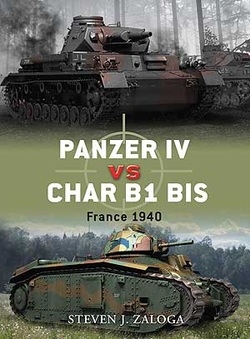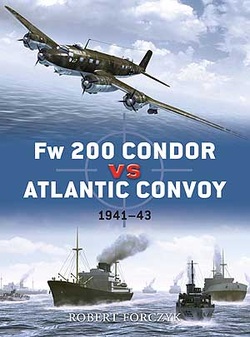
Zaloga rightly constantly mentioned that French were late starters and so their armoured units had had less time for unit training than their German counterparts. Even many Char B1 bis crews had had too little time to achieve adequate proficiency with their new tanks. And because the combat effectiveness is based on co-operation he rightly mentioned that Divisions Cuirasée de Réserve (DCR) were very recently established, the 1e and 2e Divisions Cuirasée de Réserve began forming in January 1940 and the 3e DCR only in March 1940. De Gaulle’s 4e DCR was a last minute improvisation and began forming after the German attack.
Zaloga also emphasized the importance of the decentralized Auftragstaktik to German successes during the early part of the WW2. It was local initiative vs strict control and micromanagement common to Germany’s enemies, including France in 1940.
Zaloga draws attention to the fact that the French decision to put ½ of their tanks in Divisions Cuirasée and Divisions Légère Mécanique and the rest mostly to the independent tank battalions was not odd, the Soviet and US Armies organized their tanks much the same way in 1944.
One major shortcoming in the book is the lack of organization charts of Panzer division, DCR and why not also that of Division Légère Mécanique (DLM) even if the latter is not directly relevant to Panzer IV vs Char B1 bis duel. But its organization was, contrary to that of DCR, very similar to that of a Panzer division in 1940. 20½ per cent of the French tanks participating the Battle of France were in DLMs, and if we leave out WWI period Renault FTs, 24½ per cent, that means almost ¼.
Zaloga constantly writes the start of the war when meaning the start of the German attack in the West on 10 May 1940. The map on the page 55 the symbol of the Army Group B, CG von Rundstedt, lacks one x, so instead of an army group it’s marked as an army. Also IMHO it would have made the map more informative if the number or the letter of the army or the army group had been put inside the unit symbol rectangles. Otherwise the two maps in the book are good giving an overview of the development of the strategic situation May 10 – 16, 1940 and the tactical situation in Stonne on May 16, 1940.
The tank strengths of Panzer Divisions given in the book are different than those given e.g. Jentz’s Panzertruppen. What is annoying is that most of the unit histories I have access to don’t give the number of panzers the divisions had on 9 or 10 May 1940, and when given the numbers are often different from those given by Zaloga and Jentz. E.g. those given by Stoves in the history of 1st Panzer Division, he gives only the numbers per tank type of the Panzer Regiment 1 i.e. more or less ½ of the strength of the 1st Panzer Brigade, and if we add these to those given in von Lucke’s history of the Panzer Regiment 2 the sums seems to be more in line of the Zaloga’s figures than Jentz’s, the total numbers of the combat tanks on the other hand are very close, 248, 249 and 250, but there are big differences in how the totals divided per types. Also von Plato’s history of 5th Panzer Division gives exactly the same tank strength info for 5th and 7th Panzer Divisions as Zaloga. On the other hand the information in Neumann’s 4th Panzer Division history is almost identical with the Jentz’s as are those given in Gunsburg’s article The Battle of the Belgian Plain, 12 – 14 May 1940 in The Journal of Military History 56 for 3rd and 4th Panzer Division, especially the numbers of all important PzKpfw IIIs and PzKpfw IVs are identical. Also numbers in a couple others divisional histories indicate that Jentz’s figures are closer to the truth. So IMHO after weighting the info from different secondary sources it seems to me that the Jentz’s numbers are more reliable, but of course I cannot be sure and unfortunately I have not seen the unit history of the 10th Panzer Division or other good sources on the tank strength of it in May 1940. According to Zaloga the 10th Panzer division had 48 PzKpfw IIIs and 36 PzKpfw IVs and according to Jentz 58 Pz IIIs and 32 Pz IVs but in his text Zaloga gives almost the same tank strength of the Panzer Regiment 8, the regiment of the two panzer regiments of the 10th Panzer division which fought in Stonne, as in Jentz’s Panzertruppen, 134 vs 131 and the numbers of the all-important PzKpfw IIIs and IVs are the same, 29 PzKpfw IIIs and 16 PzKpfw IVs. So we have unambiguous tank strengths for the combatants taking part to the battle of Stonne because the strength of the 3e DCR given by Zaloga is the same Doughty gives in his book The Breaking Point (1990). Also the tank strengths of other French armoured units given by Zaloga are usually in close agreement to those I have seen elsewhere but those of the 3e DLM, Zaloga seems to have missed the c. 60 Hotchkiss tanks of the 6th Light Mechanized Brigade of that division.
In the end there were not so many large scale duels between PzKpfw IVs and Char B1 bis. That is not so surprising, after all in 1940 PzKpfw IV was a support tank providing 75mm HE firesupport to lighter tanks, of which those armed with 37mm tank guns were meant to handle enemy tanks. To me the most interesting part of the book is the description of Char B1 bis and some info on the level of combat readiness of the DCRs at the eve of German attack. The book is good and well worth of having. While the Battle of Stonne was very bloody and hard and in a way important because it was fought to secure the southern “shoulder” of German deep penetration at Sedan, it wasn’t a classic tank battle, much of its outcome depended on infantry and artillery. But Capitaine Billotte’s attack in his Char B1 bis through Stonne is reminiscent of Wittmann’s attack to Villers-Bocage. Of course Wittmann’s attack had clearly bigger impact on the overall situation and Billotte came back in his tank, not on foot like Wittmann. Because there were not many large scale battles in which Char B1 bises participated to choose from and if Char B1 bis is to be the other participant of the duel the choice of the battle of Stonne is OK. The Battle of Flavion was probably the largest of those and it was fought on a good tank terrain but of course there the French were handicapped by the fact that their tanks were low in fuel when Germans attacked. And Zaloga gives a short description of that battle, too. IMHO the best example of tank duels in May – June 1940 would have been Panzer III vs SOMUA S35 with the focus on the greatest tank battle to date, that fought around Hannut in Belgium on 12–14 May 1940. It was a meeting engagement between the 2e and 3e Divisions Légère Mécanique and the 3rd and 4th Panzer Divisions.
And thanks to my brother for lending his copy of Zaloga's book.

 RSS Feed
RSS Feed
